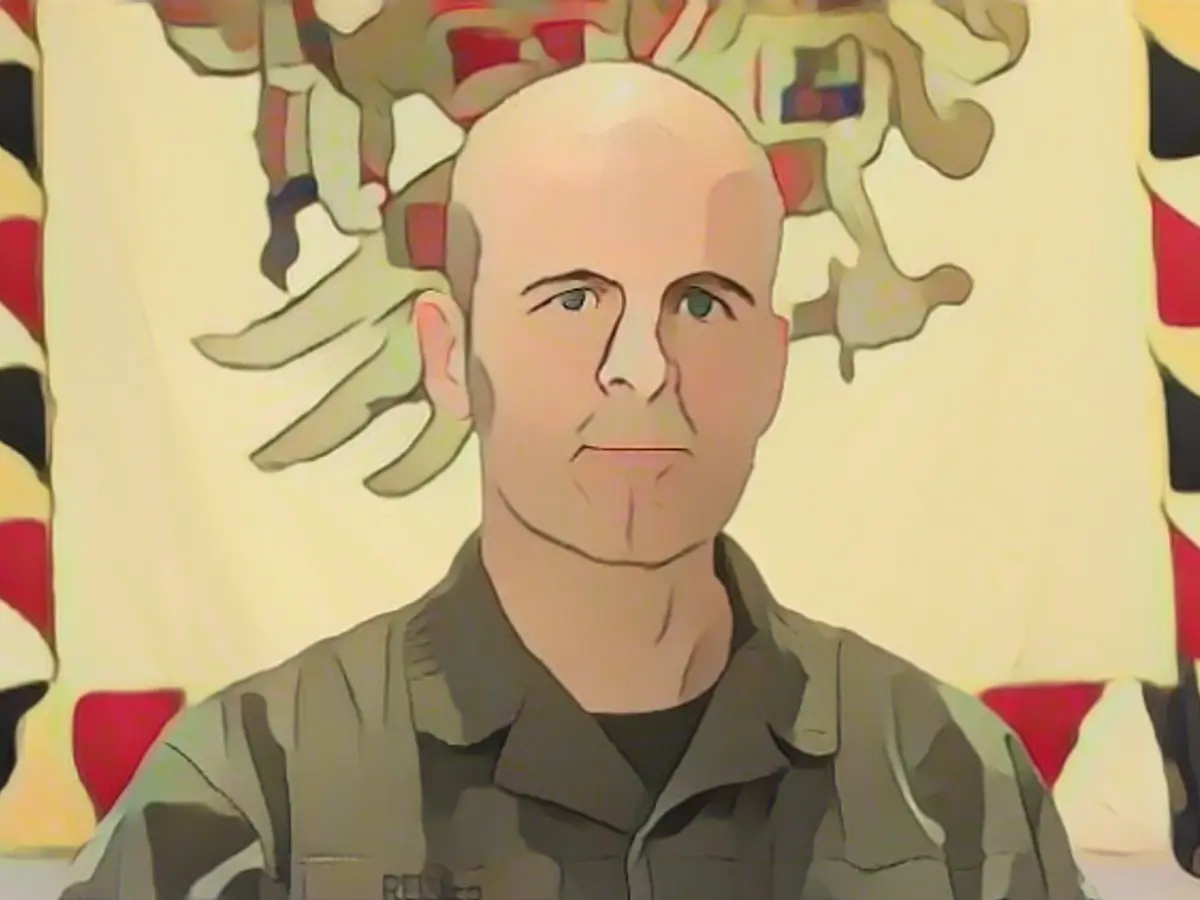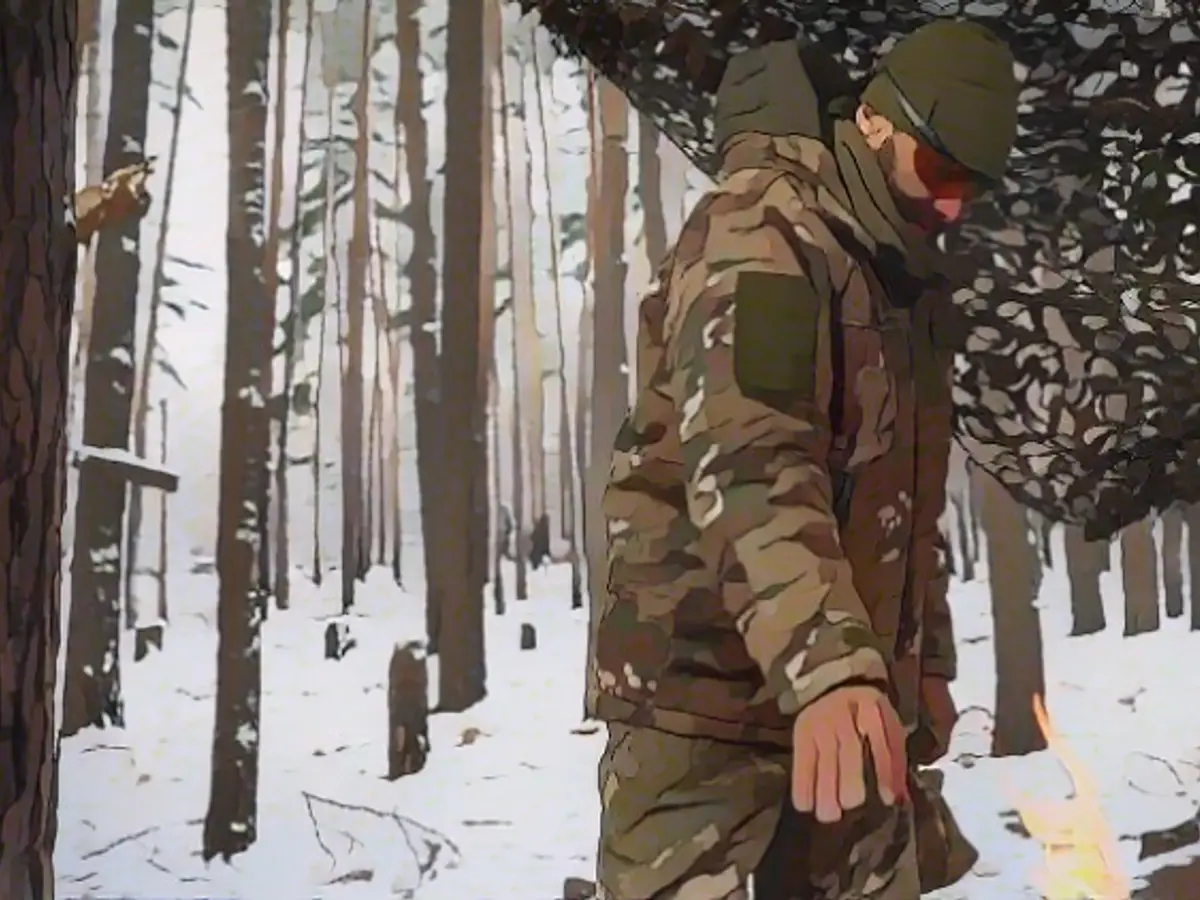"It's a ruthless situation for the Ukrainians on the Dnipro"
Winter is descending on Ukraine with full force. The situation is dramatic for the Ukrainian soldiers, as their positions are not yet winter-proof, says Colonel Markus Reisner in an interview. "They are virtually unprotected in this wet and cold weather." Ukraine therefore has to rotate its forces quickly, which in turn leads to losses because the Russians attack them.
ntv.de: Mr. Reisner, winter has arrived in Ukraine with heavy storms, snow and frost. Are the frozen grounds a welcome change for the troops on the front line compared to the muddy masses of Rasputitsa or do they bring new challenges?

Markus Reisner: The first snowfalls mark the transition to winter, but not yet the end of the Rasputitsa. For several weeks, there will therefore be a mixture of very cold weather with snowstorms and short periods where it is still muddy but very cold. This transitional period does not bode well, but poses an additional challenge for the soldiers as they first have to adjust to these cold conditions. It will be a while before the ground is really frozen and gives way to mud.
What do the new weather conditions mean for the troops on the front line?
First of all, for the Ukrainian side it means that the soldiers will have to face the winter where they were left after the offensive. In the central area in front of Melitopol in particular, the offensive has achieved tactical successes in that the Ukrainians have managed to penetrate the Russians' first line of defense, but they have not won Tokmak. In the open terrain in front of the town, they have been under constant fire from Russian artillery and first-person-view drones in recent weeks, which means that they have only been able to prepare for the winter and winterize their positions to a very limited extent. The Russian soldiers on the other side have the advantage that they have already been setting up their defensive positions for months and therefore have a great advantage when it comes to the weather. For the Ukrainians, the wet and cold has become an additional challenge.
What should Ukraine ideally have done in recent weeks to prepare well for the onset of winter?
The aim of the offensive in the central region was to reach the city of Tokmak in order to set up winter quarters there. But that didn't work out. Instead, they are now in the destroyed areas between Robotyne and Werbowe, north of Tokmak. This means that they are virtually unprotected from the wet and cold weather. The Ukrainians are now trying with all their might to make the necessary preparations to hold the terrain they have won during the winter.
How can you imagine winter-proof positions?
The main thing is that the soldiers need to keep warm. So you can do this in two ways: Firstly, through regular rotations. You can see very clearly on videos that the Ukrainian army is constantly trying to replace its troops by advancing with one or two armored vehicles, quickly dropping off new soldiers to pick up the others who have already been in the positions for several days. This is one way of getting the soldiers out into the dry, where they can warm up and the wounded can be treated. However, this is always associated with casualties because the Russians wait for precisely these situations and then launch targeted attacks with artillery and first-person view drones.
And the other option?
The other option is to build winter-proof positions on site. To do this, you have to dig deep into the ground, excavate stable shelters and, above all, drain them, i.e. make sure that the water can be drained away. You also have to build the whole thing under cover, which means you need strong tree trunks, for example, to lay over these positions in order to be protected against artillery fire and the use of first-person view drones. You also need to camouflage the positions. You also need appropriate facilities for a certain level of basic hygiene. Then you actually have the option of winterizing quarters where you are at least not defenceless against the enemy for several weeks or months.
Is it also possible for the soldiers to have some kind of heat source in the bunkers?
They often have small stoves. The dilemma is that they are constantly under observation, in the so-called glass battlefield. Even the construction work is observed and possibly fought against, especially with first-person drones. The tragedy is that even the smallest amount of smoke is seen. For example, if a small chimney sticks out of a bunker somewhere, it is often detected and can be shot at. There are videos in which some drones have deliberately thrown hand grenades into these smoke traps, which then detonate in the bunker.
How long can the soldiers even hold out in such cold conditions without stoves or ready-made shelters?
Very, very short. The weather has a strong influence on combat strength and the combat value decreases very quickly. If the Ukrainians are therefore unable to set up appropriate positions with heating stoves, they have to rotate the soldiers quickly and they try to do so, but this is associated with losses. This is also particularly precarious at Krynky on the Dnipro, because they are trying to carry out these rotations with ships and rubber dinghies.
Krynky is one of the bridgeheads that Ukraine has built on the southern bank of the Dnipro, right?
Yes, and since last week there have been the first videos from there, where the Russians are trying to stop these rotations day and night with drones equipped with thermal imaging cameras. You can imagine what it means to fall into the water after hitting a boat in these temperatures. The soldiers are soaked through and if they are not warmed up immediately, this can lead directly to severe frostbite or death. This is also the case the other way round: in the cold, the Ukrainians try to cross the river to the south bank. If they are lucky, they arrive in the swamp area on the other side. Then they get out, try to quickly gain distance from the boat, perhaps step into a puddle or fall in, get wet and are perhaps injured by the artillery fire that begins. This is a ruthless situation for the Ukrainian forces on the Dnipro. There are unconfirmed reports from the Russian side that they have captured Ukrainian soldiers, all of whom have suffered frostbite. This has not been confirmed, but it is an indication in this direction. The situation in Krynky is therefore worse than in Avdiivka to some extent, because there the soldiers can at least warm themselves halfway in destroyed buildings, which is almost impossible for the Ukrainian marines in Krynky.
Added to this are the heavy drone attacks throughout the country. At the weekend, Russia launched the heaviest drone attack on Ukraine since the start of the war. What is Russia aiming to achieve with this, or what tactics are behind it?
You have to distinguish between different drone attacks: At the tactical level, Russia is mainly using first-person-view drones, while at the operational level it is partly using Lancet drones, which are used far behind the front line, for example for the targeted destruction of Ukrainian fighter planes. At the strategic level, it is the use of Iranian drones paired with Russian cruise missiles targeting Ukraine's critical infrastructure. What is striking is that in recent weeks there have been almost daily deployments of Iranian drones, up to a dozen, but usually only one or two cruise missiles. This is a clear indication that the Russian side is trying to find out how the Ukrainian air defense system is set up so that it can then strike on a massive scale. We have now seen a first taste of this in the last few days. It was this massive attack with Iranian drones in the Kiev area, where Russia tried to saturate the air defenses.
How are they doing that?
The Ukrainian air defense then fires all available missiles, whatever ammunition is available at the airfield, whereby the Russians then attack individual targets with cruise missiles. On the one hand, they test the Ukrainian air defenses and then launch a massive attack.
So the Russians are looking for the gap in the air defense and then try to terrorize the civilian population with drones and attack the infrastructure?
Exactly, so two aspects come together. Firstly, the daily attacks, mostly at night, so that the population can't rest and has to constantly seek shelter. Secondly, the attempt - after a certain saturation of Ukrainian aircraft - to carry out targeted attacks with cruise missiles or Iranian drones on objects of critical infrastructure.
How is Ukraine doing in its defense at the moment?
Good at the moment. They have a launch rate of between 80 and 90 percent, which is very high, even if there is the dilemma that the remaining 10 to 20 percent, which penetrate and hit targets, naturally cause destruction. However, Ukraine has done two things to prepare itself: Firstly, it has tried to restore critical infrastructure, following the massive losses last winter. They have patched up at least 10 to 15 percent of the critical infrastructure. This means that around half of the city's infrastructure and power supply is operational.
And the second thing?
The second is that you have been trying to deploy additional air defense over the last few months. The deliveries from the West are making a decisive difference here, such as the German government's announcement that it will be supplying another Patriot system or Iris-T, for example. Ukraine can deploy these specifically around the cities. The question is, if these attacks remain at the same level of intensity as we have recently experienced, will there be enough ammunition over the coming weeks and months to counter all these Russian attacks? Or will there be a culmination point where there is no longer enough ammunition to be able to fend off these intensive Russian air attacks? That remains to be seen in the coming months.
Vivian Micks spoke to Markus Reisner
- Despite the arrival of winter in Ukraine, the Ukrainian troops have been unable to adequately winterize their positions in the central area due to constant Russian attacks, leaving them vulnerable to the wet and cold weather.
- In the Zaporizhzhya region, the Ukrainian forces have been facing heavy drone attacks from Russia, even during the onset of winter. These drones equipped with thermal imaging cameras pose a threat to the rotations of soldiers trying to cross the river Dnipro.
- Russia, on the other hand, has the advantage of having already winterized their positions for months in the same region, providing their troops with a significant advantage in the harsh winter weather.
Source: www.ntv.de








